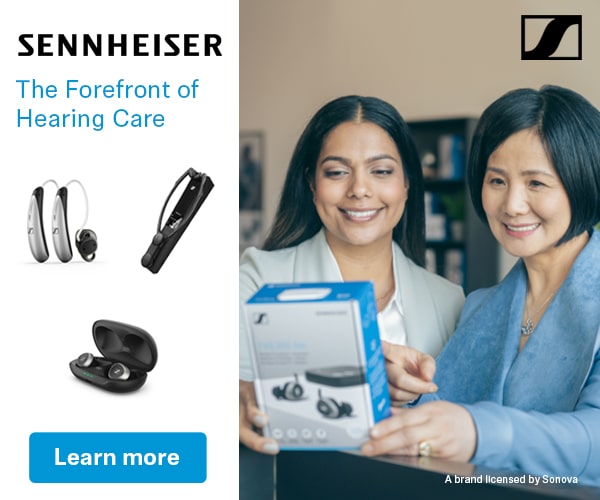Evolution is necessary, not only in nature but also in business. Generally, living organisms benefit from evolution. So do people and probably so do most patients. Some folks seem to fear progress around them. Some quietly observe. Some argue violently. Most float by on the prevailing current without notice, comment, or participation.
For those of you who dispense hearing instruments, try to think of the hearing field and the evolutionary effects that the coming issues will have on all participants. Specifically, consider the merging of groups and manufacturers, the advent of a more consumer-oriented method of sales, the technological changes that are inevitable, and the participation of third-party payers. Some of these topics have been almost beaten to death. Others may be invisible to patients/consumers as well as to professionals.
Hearing Device Manufacturers
As is evident in most industry-oriented publications and/or blogs, the old hearing aid device manufacturers (Big 6, or 5, or 7) seem to have anticipated change and acted to do such things as purchase practices/dispensing businesses, change their distribution structure, alter their line of devices by means of stratification and pricing, and have likely directed impressive R&D towards products that require less “professional” oversight. As newer device manufacturers enter the picture (sometimes without the proper certifications, specifications, or assurances), the customary manufacturing knowledge, restrictions, and limitations may not accompany their products. Nevertheless, the old methods of tail-wagging-dog (or who’s wagging what) are certainly changing. If for the better, only time will tell. For sure, almost all pricing will change.
Distribution systems
In addition to the above manufacturer and market considerations, the industry has seen substantial changes in distribution over the past several years. The rise of purchasing groups, the alliances of several offices into other groups, the consolidation of offices owned by a manufacturer, even several groups associated with third-party payers, have added so much complexity that many in the field do not know who owns (or owes) what or whom. Who’s the dog and who’s the wagged tail? Despite the modifications of distribution, who’s the “dog” should be pretty clear. And, perhaps this is also about to change. Certainly, the way in which devices get to the consumer will change.
Hearing device dispensers
Assume that everyone who sells traditional hearing devices at retail prices belongs in this category—including instrument dispensers, dispensing audiologists, as well as ENT/Otology offices that derive significant income from the sale of devices. Also included here are big (and small) box stores. It ought to be clear that one possibility of the coming change will require substantive change in the practices of professionals. Pricing of devices—long held as inconsequential by the retail field in general—has been shown to be at least somewhat influential in determining the purchase of instruments. Everyone is about to see the extent of money’s influence in a first-hand manner. There are probably business statisticians and other experts who can make more exact predictions than many of us, but it surely is illogical to predict anything other than a gradual (or maybe even abrupt) change in retail sales revenue in these offices.
Audiologists
Audiologists appear to be in the middle between conventional retailers—traditional instrument dispensers—and other licensed professional clinicians, i.e. physicians. It’s difficult to imagine these clinicians moving from their middle position. Taking a primary management role away from physicians, while perhaps justifiable in many aspects, is still fraught with political and philosophical barriers. Lacking aggressive movement toward the retail end of things, it would seem that audiology must revert to other methods of proving worth. Obviously, these methods must include substantial demonstrations of descriptive and rehabilitative benefits. Fortunately, these areas are potentially quite fertile.
Otologists/ENT physicians
At the advent of sub-specialties in medicine, otology found great numbers of patients needing surgery. Following stapedectomies and tympanoplasties, came implants. Otology eventually turned to traditional hearing devices as a source of revenue that many believe exceeds that generated by medical/surgical procedures in some offices. As with audiology and traditional dispensing offices, these practices also may experience a significant decrease in patient demand for their prostheses and they will also experience an accompanying decrease in gross revenue. There are likely many “business consultants” actively working to “plug” those holes in medical businesses.
Patients
Ahah! The real and most important consideration! Patients and consumers sort of sponsored the impending changes. And, they will, in aggregate, benefit the most. The future promises more help for hearing loss at less cost. At least for many. What’s not to like? Aren’t advances like this the best of what technology and rehabilitation offers?
Of course, there is no benefit without cost. Some hearing loss patients will be greatly served by these new devices. Some patients will need significantly more intervention that an OTC/DIY product alone can offer. How these problems will be discovered and solved should prove interesting.
If we assume these products, predictions, and directions are even partially correct, what’s the next wave that will influence the hearing care of patients. Stay tuned. Next time: New Players (Insurers)






